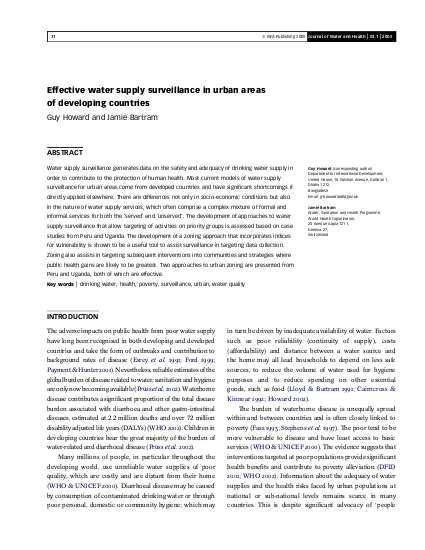
Water supply surveillance generates data on the safety and adequacy of drinking water supply in order to contribute to the protection of human health. Most current models of water supply surveillance for urban areas come from developed countries and have significant shortcomings if directly applied elsewhere. There are differences not only in socio-economic conditions but also in the nature of water supply services, which often comprise a complex mixture of formal and informal services for both the ‘served’ and ‘unserved’. The development of approaches to water supply surveillance that allow targeting of activities on priority groups is assessed based on case studies from Peru and Uganda. The development of a zoning approach that incorporates indices for vulnerability is shown to be a useful tool to assist surveillance in targeting data collection. Zoning also assists in targeting subsequent interventions into communities and strategies where public health gains are likely to be greatest. Two approaches to urban zoning are presented from Peru and Uganda, both of which are effective.
Links
Resource collections
- UN Habitat - Urban Response Collection
- Urban Response - Urban Crisis Preparedness and Risk Reduction
- Urban Response Collection - Community Engagement and Social Cohesion
- Urban Response Collection - Economic Recovery
- Urban Response Collection - Environment and Climate Change
- Urban Response Collection - Housing, Land and Property
- Urban Response Collection - Urban Crisis Response, Recovery and Reconstruction
- Urban Response Collection - Urban Resilience